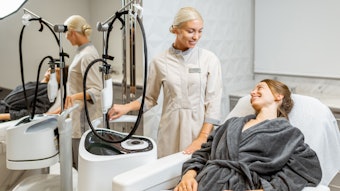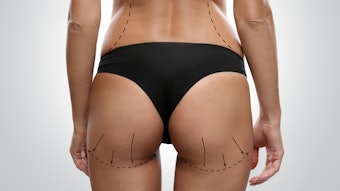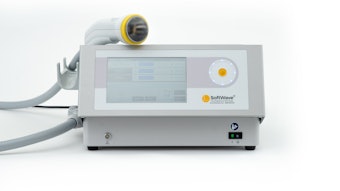
Aesthetics is one of the fastest growing fields in medicine, fueled by the introduction of more affordable nonsurgical cosmetic procedures, such as botulinum toxins, dermal fillers and laser treatments. These noninvasive and minimally invasive procedures are often performed by—or delegated to—allied health professionals and, in some cases, estheticians.
The unique, elective nature of these services combined with the wide range of providers soliciting patients has pushed state regulators to look more closely at issues such as scope of practice and physician supervision of ancillary providers. One of the biggest concerns currently facing the medical aesthetic industry is a lack of knowledge of the regulations governing providers and practice owners.
Keeping your medical practice or medspa in compliance with ever changing regulations is a difficult task. To help you stay up to date, I have compiled a list of the top 10 compliance issues cosmetic practices and medspas must regularly review to ensure they are operating within the bounds of state and federal law.
State Licensure Requirements
Most states consider injectables as well as laser and energy-based treatments medical procedures. The degree to which these services can be delegated to ancillary providers—such as registered nurses (RNs), nurse practitioners (NPs) and physician assistants (PAs)—and unlicensed care providers varies based on state laws regarding scope of practice and physician supervision.
Scope of practice regulations dictate which procedures, actions and processes a healthcare practitioner is permitted to undertake based on their education, professional licensure and demonstrated competency. In New York state, an esthetician is permitted to perform laser hair removal, while estheticians in neighboring New Jersey are not permitted to operate any form of laser. Because the rules vary, it is imperative that you become familiar with your state’s regulatory guidelines. Practitioners who delegate tasks that are outside of the delegatee’s scope of practice may face civil penalties and/or criminal charges for aiding and abetting the unlicensed practice of medicine. The delegatee may also face prosecution.
In addition, practitioners who delegate treatments to ancillary providers must be able to perform the same tasks themselves—you cannot delegate a procedure to your staff that you do not know how to perform.
Image copyright Getty Images
[pagebreak]
Supervision Requirements
Once you have obtained information relative to which tasks can be delegated to whom, you must consider state and federal supervision requirements. In some states, the physician must examine the patient before delegating a prescribed treatment; other states require the supervising physician to be on site while procedures are performed.
Your state may also have restrictions relating to how many PAs a physician can supervise at any given time and require a written practice agreement with the PA.
Practitioners who act as collaborating physicians for NPs may also be required to maintain a written collaborative practice agreement. As of 2016, the only states that do not require a written collaborative agreement for NPs are: Alaska, Arizona, Colorado, Hawaii, Idaho, Iowa, Maine, Montana, Nebraska, New Hampshire, New Mexico, North Dakota, Oregon, Rhode Island, Vermont, Washington, Wyoming and Washington, D.C. Failure to maintain proper collaborative or practice agreements can lead to sanctions against both the physician and the allied health professional.
Training Requirements
As the medical aesthetics field continues to evolve with new technologies and procedures, lack of proper training is increasingly an issue. Many practitioners believe that manufacturer-provided training is adequate prior to delegating laser treatment, but this is not the case.
All state licensing boards require nonphysicians to undergo specific, non-manufacturer-provided training in laser safety and the use of medical lasers before performing procedures on patients.
Medical Director Rules
The term medical director must be used with caution. A medical director is generally described as a person who performs quality assurance review for a medical facility. Acting as a medical director or lending your name as a medical director to a medspa with which you have no real involvement is improper in most jurisdictions.
Another important consideration is physician compensation. Physicians cannot be paid for medical services that they did not perform, though compensation can typically be shared among members of the same practice group.
Malpractice Insurance
Despite the elective nature of cosmetic treatments, laser and injectable procedures are considered medical procedures. Therefore every practitioner must review their current medical malpractice policy to make sure they are covered for the use of lasers—and the delivery of all treatments offered—in their practices. (I have reviewed numerous insurance policies that excluded coverage for certain types of laser procedures.)
In addition, you must inform your carrier every time you introduce a new device or procedure. As the physician-owner, your policy should provide coverage for all staff members. Ancillary providers must also maintain their own medical malpractice coverage.
Image copyright Getty Images
[pagebreak]
Advertising Restrictions
Medpas and medical practices can promote their products and procedures through paid advertisements and marketing, but must steer clear of misleading advertising messages—and the line between appropriate and misleading messages can be blurry. For guidance, practice owners can look to state consumer protection laws, the Federal Trade Commission (FTC) and state medical boards.
Several state medical boards have specific guidelines on the use of patient testimonials. Some do not allow the use of testimonials; others dictate that patients cannot receive compensation for the treatments performed. In states that allow paid testimonials, it must be noted that it is a paid advertisement. If the testimonial is from an individual who is not your patient, some boards require you to note that this person is not a patient of the practice. All testimonials should include a disclaimer that outcomes seen are not typical for all patients.
The FTC, which governs commercial advertising, requires all forms of physician advertising in any medium to be explicitly and implicitly truthful and not misleading. Following are some guidelines to help ensure that your advertisements are not deemed to be deceptive or misleading:
- All information must be accurate. Do not omit information that suggests potential harm.
- Do not create false or unjustified expectations.
- Avoid terms such as “top,” “world famous,” “world class” or even “pioneer.” These phrases are typically viewed as misleading and designed to attract vulnerable patients.
- Avoid statements that rank your competence or the quality of your medical services as they are generally not supportable by fact.
- If you display paid advertisements/advertorials from other sources or use testimonials for which the subject received compensation, it must be clearly stated that the advertisement is paid.
- Avoid calling yourself a specialist if you are not a board certified specialist. It is also impermissible to indicate that you have a subspecialty where no medical subspecialty exists.
- Take extra precaution when advertising experimental procedures or procedures that have not been approved by the FDA to result in the desired outcome.
- Do not make a guarantee of results.
- Detail fee structures or costs for procedures to avoid inaccurate assumptions.
- Make sure that there are disclaimers, such as “results not typical for all patients” or “outcomes may vary,” with any before and after images.
Corporate Practice of Medicine
When forming a relationship with a licensed physician, nonphysician medspa owners must be aware of the corporate practice of medicine doctrine, as well as other ethical considerations. These considerations can help dictate the appropriate ownership structure.
The corporate practice of medicine doctrine prohibits physicians and other healthcare professionals from being employed by a business entity or non-healthcare professional. This frequently occurs in the medspa industry when a facility owned by a nonphysician seeks to hire a physician to perform medical services or act as its supervising “medical director.” According to the corporate practice of medicine doctrine, this type of arrangement is strictly prohibited. Medspas should meet with a healthcare attorney to create a legal business arrangement when seeking to add medical services.
Fee Splitting and Commission-Based Compensation
Fee-splitting statutes frequently prohibit physicians from sharing in a nonphysician’s compensation for services performed. Therefore, compensation models should not be based on patient or treatment volume.
Image copyright Getty Images
[pagebreak]
Patient Charts and Practice records
Aesthetic practices and medspas performing medical procedures must maintain appropriate patient documentation and protect that information according to the Health Insurance Portability and Accountability Act (HIPAA) of 1996 patient privacy regulations.
In addition to creating clear protocols on patient charting and storage—including who has access to these files—all practices should have standard operating procedures and protocols in place. These written protocols detail, among other things, what procedures are permitted to be performed and by whom, where the patient records are kept, how medication is stored and discarded, who to contact in an emergency and what emergency supplies are on hand.
OSHA Compliance
Occupational Safety and Health Administration (OSHA) requirements are often overlooked by medical aesthetic facilities, but you are required to follow OSHA workplace safety guidelines.
In addition to recording all workplace injuries and posting signage to promote safety and inform employees of their rights under OSHA, the federal agency also has specific regulations relating to medical practices and medspas. Practices that offer laser treatments must have a trained laser safety officer on staff, and are required to develop blood-borne pathogen training programs and protocols. Practices must keep material safety data sheets (MSDS) for all chemicals (including cleaning products) and medications used or stored in the facility. OSHA fines can be substantial depending on the degree of the violation, so knowing the OSHA guidelines is critical.
This list covers the most common compliance issues facing medical aesthetic practices and medspas, but it is by no means exhaustive. Carefully reviewing state and federal regulations relating to the practice of medicine, business ownership and employment can help you steer clear of regulatory concerns and create an ethical and safe work environment for patients and staff members alike.
Allyson Avila is a partner at the national law firm of Gordon & Rees Scully Mansukhani. Contact her at 845.406.2935, [email protected].
Image copyright Getty Images











